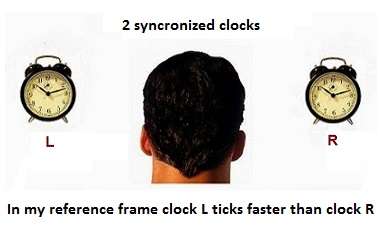Diplacusis
Diplacusis, also known as diplacusis binauralis or inter aural pitch difference (IPD) is a type of hearing disorder that is the perception of a single auditory stimulus as two separate sounds which may differ in pitch or in time. It is typically (though not exclusively) experienced as a secondary symptom of sensorineural hearing loss, although not all patients with sensory neural hearing loss may experience diplacusis or tinnitus. Onset is usually spontaneous and can occur at the time of an acoustic trauma or in the midst of an ear infection. Sufferers may experience the effect permanently, or it may resolve on its own. Treatment includes a full medical examination as well as an audiological examination that may explain the nature of the problem. If needed, amplification may relieve the symptoms of diplacusis. Therapy in helping the patient understand the cause of the symptom and tinnitus retraining may provide some relief. In at least some cases, amplification makes no difference and there is no treatment other than waiting for natural resolution.
Diplacusis of Pure Tones
For people with unilateral cochlear hearing losses or asymmetrical hearing losses, the same tone presented alternately to the two ears may be perceived as having different pitches in the two ears. This is the phenomenon of diplacusis. The magnitude of the shift can be measured by getting the subject to adjust the frequency of a tone in one ear until its pitch matches that of the tone in the other ear.
On presentation of a single tone alternating between ears (i.e. 1000 Hz left, 1000 Hz right, 1000 Hz left, ...), a given person will consistently mismatch these sinusoids the same amount between trials if doing a pitch-matching task.
Biological Explanation via Theories of Pitch of Pure Tones

There are two theories on the cause of diplacusis: place theory and temporal theory.
Place Theory posits that the cause is looking for the edge of the wave for the pitch and could explain diplacusis as a small differences between the two cochleas.
Temporal Theory posits that the cause is from looking at the phase locking to tell what the pitch is. This theory has a hard time explaining diplacusis. There are some examples of pitch which don’t have an "edge" on the basilar membrane, which this would account for—i.e. white noise, clicks, etc.
Effects of Sensorineural Hearing Loss (SNHL)
If one ear has normal thresholds and one has SNHL (a unilateral loss), there is a lot of diplacusis. As much as 15 – 20% (for example 200 Hz one ear => 240 Hz in the other). Hard to match because the SNHL ear hears it "fuzzily".
Bilateral SNHL gives less diplacusis, but pitch distortions may persist. This may cause problems with music and speech understanding.
See also
- Pitch (psychophysics)
- 2 syncronized clocks experiment
References
- Turner, Christopher. "Perception of Pitch." Wendell Johnson Speech and Hearing Center, Iowa City. Dec. 2008.
- Plack et al. (Ed).Pitch : Neural coding and perception. Springer. 2005
